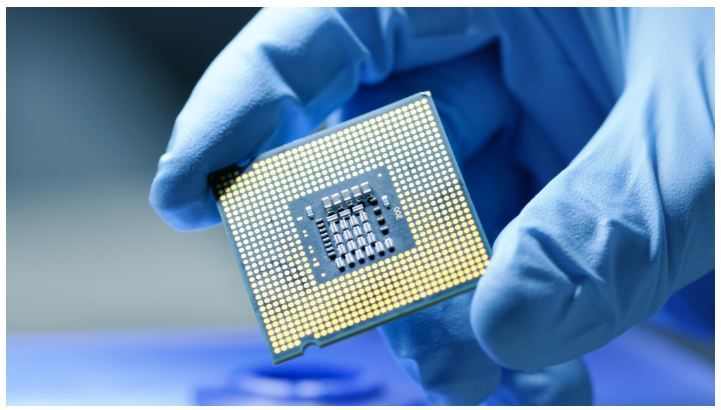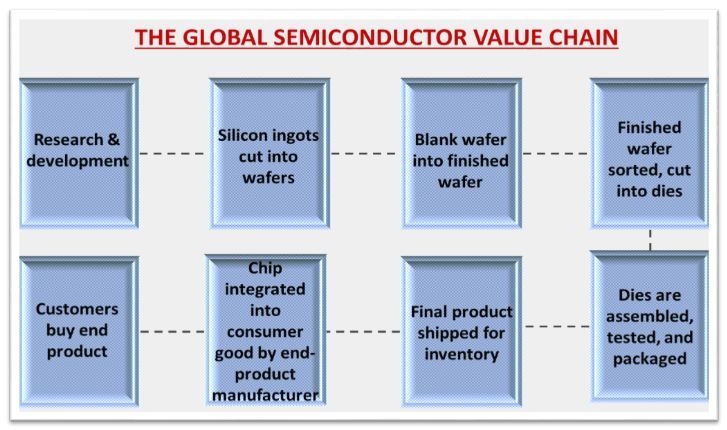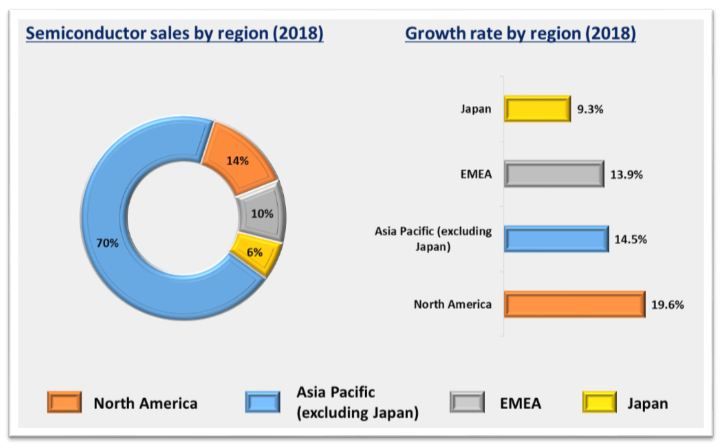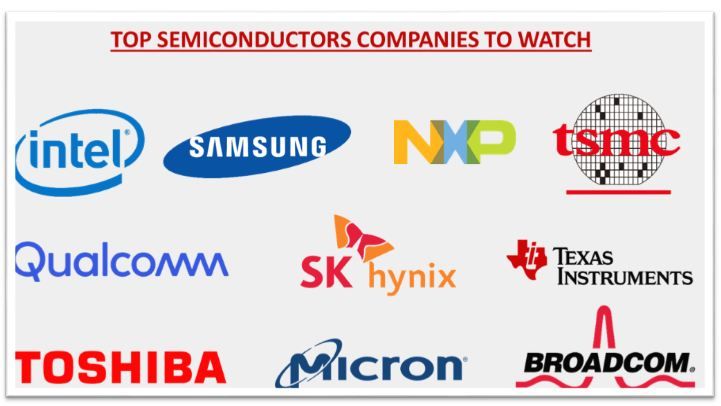
The Future Of Semiconductors Industry
As per the report published by UnivDatos Market Insights; the Asia-Pacific semiconductor packaging and assembly equipment market is expected to reach US$ 3,411.1 million by 2025, at a CAGR of 5.6% during the forecast period (2019-2025). The semiconductor industry has created a tremendous, lasting significance on society and our daily lives. Each technological device that homes a chip or transistor from the tiniest calculator to cell phones, or perhaps microwaves contains semiconductor science and microchips. In associate age, wherever everything is turning into progressively processed, pc circuits steam-powered much everything. Trendy life depends on semiconductor chips and transistors on silicon-based integrated circuits that have the facility to change electronic signals on and off. Low-cost part semiconducting material is rife in these circuits since it will be wont to management the flow of electricity because it will insulate and semi conduct electricity. Until recently, microscopic transistors squeezed onto semiconducting material chips have halved in size annually. the trendy digital age that semiconductors helped produce has junction rectifier to the arrival of the net of Things (IoT), computer science (AI), autonomous vehicles, and 5G phones.
Future Trends in the Semiconductor Industry:
- The increasing demand for AI-based applications has created a new growth opportunity for semiconductor manufacturing companies
- Another important trend that may boost the expansion of the semiconductor industry is that the onset of level-three autonomous vehicles on the road
- The IoT revolution has not only increased the demand for semiconductor chips but also shifted the value capture to software and solutions
- In order to improve the value of digitalization, there is a need for the semiconductor industry to take a look at emerging digital supply network technologies

Companies have begun to acknowledge the potential of new markets and downstream revenue opportunities as they explore a more comprehensive “silicon to services” model that spans the data center to the mobile edge. More specifically, with eroding average selling prices and increasingly prohibitive design costs at ever lower nodes, many companies are now searching for a fresh revenue stream across a wide range of verticals comprising the Internet of Things. Major semiconductor players have positioned themselves to compete better across multiple verticals, including cloud-based computing, artificial intelligence (AI), and self-driving vehicles. According to KPMG, many companies increasingly see Mergers & Acquisitions (M&A) as the only way to drive real revenue growth, giving a new emphasis to the “make vs. buy” question, with many selecting the “buy” answer.

Semiconductors are nowadays widely adopted in several industries, especially consumer electronics, communications, automotive, defense and aerospace. With the continuous technological advancement and rising demand in the end-user industries, global semiconductor sales are projected to witness a more promising future. Geographically, Asia Pacific is currently dominating the global semiconductor market, with China, South Korea, Japan, and Vietnam being some of the world’s largest semiconductor manufacturers and consumers. China has dominated the global semiconductor industry in production and consumption over the past decades, its leading position is expected to continue over the near future, mainly driven by the fast-growing industrial automation, consumer electronics, IT & communication and automotive industries. Growing deployment of advanced integrated chips across several sectors including automotive, consumer electronics, healthcare, industrial and aerospace among others are driving the market for semiconductor packaging and assembly equipment market in the Asia-Pacific region
Competitive Scenario:

Conclusion:
Technology is always evolving, but more so today than ever before. While 5G, IIoT big data, artificial intelligence, the connected car and digital transformation are all in their infancy, they are poised to have major implications for the future of the semiconductor industry in the next three years. Most companies are just beginning to implement some of these trends. Given the numerous benefits these technologies offer, they present ample opportunities for those who move swiftly to be a technological innovator and perhaps get a jumpstart on the competition or risk being left behind.
Author: Ajit Kumar Singh
